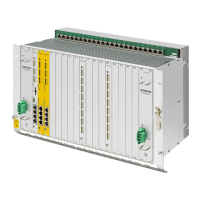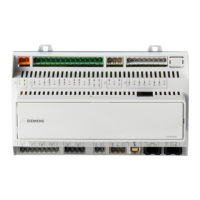3. Now open the "slaesvcconf.xml" configuration file.
4. Enter the respective NC channel in the <Connections> tag. Only use the XML tags from
the following table to specify the NC channel.
NC chan‐
nel
XML tag ContextName
1 PartprogramMessageChannel_01 partprogmsg01
2 PartprogramMessageChannel_02 partprogmsg02
3 PartprogramMessageChannel_03 partprogmsg03
4 PartprogramMessageChannel_04 partprogmsg04
5 PartprogramMessageChannel_05 partprogmsg05
6 PartprogramMessageChannel_06 partprogmsg06
7 PartprogramMessageChannel_07 partprogmsg07
8 PartprogramMessageChannel_08 partprogmsg08
9 PartprogramMessageChannel_09 partprogmsg09
10 PartprogramMessageChannel_10 Partprogmsg10
Example
<?xml version="1.0" encoding="UTF-8" standalone="yes"?>
<!-- Configuration of the Solutionline Alarm & Event Service Adapter
-->
<CONFIGURATION>
<Connections>
<PartprogramMessageChannel_02>
<ContextName type="QString" value="partprogmsg02"/>
</PartprogramMessageChannel_02>
</Connections>
</CONFIGURATION>
Restart SINUMERIK Operate
The files must still be converted into a binary format so that the alarm texts can be displayed
during the program runtime. This data is only converted during power up.
To do this, restart SINUMERIK Operate. In the same directory where the .ts files are located,
files with the same name are created with the ".qm" file extension.
The result of the conversion is written to the "alarmtext_conversion.log" or
"oem_text_conversion.log" file. Errors that occur during the conversion, such as syntax errors
in a parameter file, are also written to the file.
Configuring alarms
13.2 Configuring alarm and message texts via alarm text files
SINUMERIK Operate (IM9)
Commissioning Manual, 12/2017, 6FC5397-1DP40-6BA1 265

